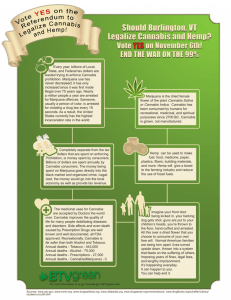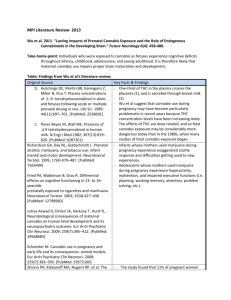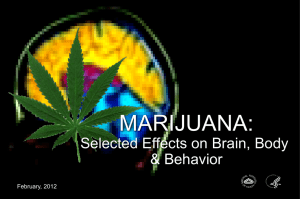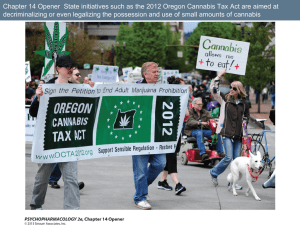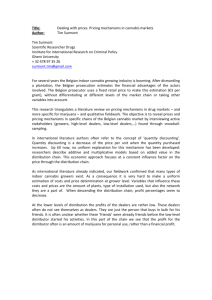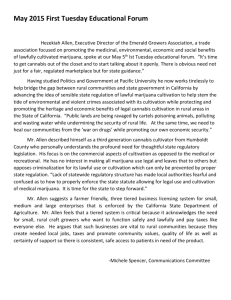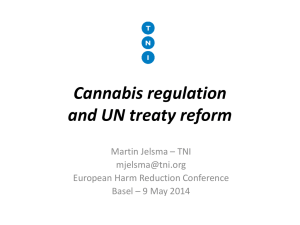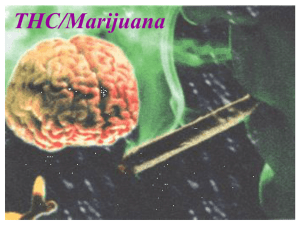Teenage Wasteland 2014
advertisement
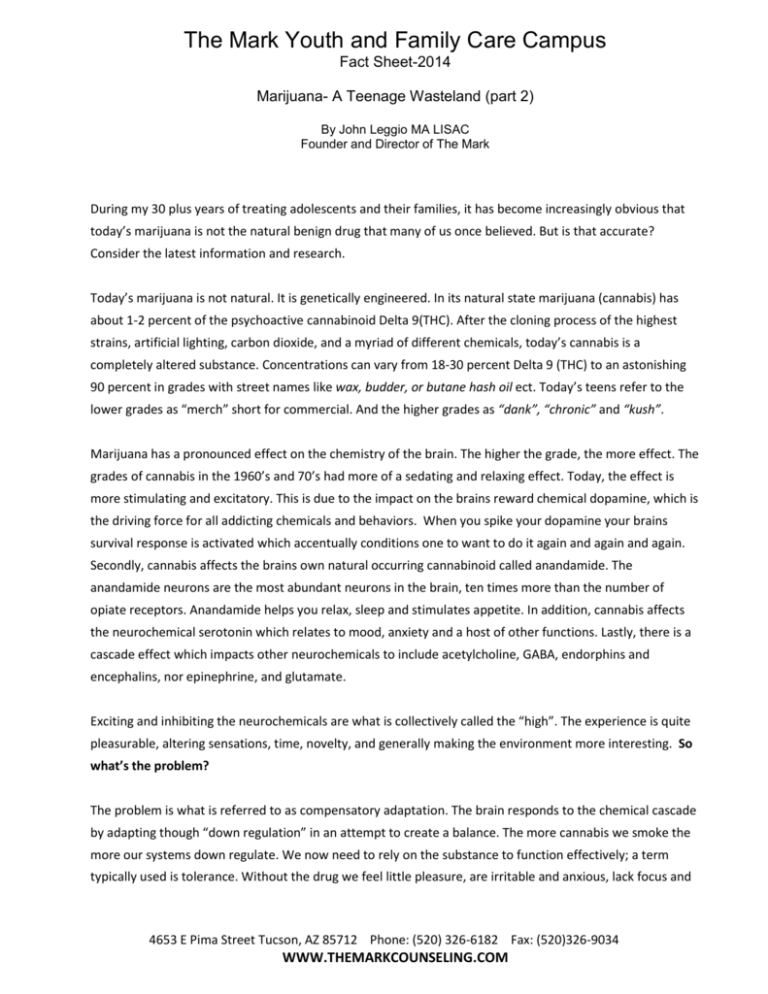
The Mark Youth and Family Care Campus Fact Sheet-2014 Marijuana- A Teenage Wasteland (part 2) By John Leggio MA LISAC Founder and Director of The Mark During my 30 plus years of treating adolescents and their families, it has become increasingly obvious that today’s marijuana is not the natural benign drug that many of us once believed. But is that accurate? Consider the latest information and research. Today’s marijuana is not natural. It is genetically engineered. In its natural state marijuana (cannabis) has about 1-2 percent of the psychoactive cannabinoid Delta 9(THC). After the cloning process of the highest strains, artificial lighting, carbon dioxide, and a myriad of different chemicals, today’s cannabis is a completely altered substance. Concentrations can vary from 18-30 percent Delta 9 (THC) to an astonishing 90 percent in grades with street names like wax, budder, or butane hash oil ect. Today’s teens refer to the lower grades as “merch” short for commercial. And the higher grades as “dank”, “chronic” and “kush”. Marijuana has a pronounced effect on the chemistry of the brain. The higher the grade, the more effect. The grades of cannabis in the 1960’s and 70’s had more of a sedating and relaxing effect. Today, the effect is more stimulating and excitatory. This is due to the impact on the brains reward chemical dopamine, which is the driving force for all addicting chemicals and behaviors. When you spike your dopamine your brains survival response is activated which accentually conditions one to want to do it again and again and again. Secondly, cannabis affects the brains own natural occurring cannabinoid called anandamide. The anandamide neurons are the most abundant neurons in the brain, ten times more than the number of opiate receptors. Anandamide helps you relax, sleep and stimulates appetite. In addition, cannabis affects the neurochemical serotonin which relates to mood, anxiety and a host of other functions. Lastly, there is a cascade effect which impacts other neurochemicals to include acetylcholine, GABA, endorphins and encephalins, nor epinephrine, and glutamate. Exciting and inhibiting the neurochemicals are what is collectively called the “high”. The experience is quite pleasurable, altering sensations, time, novelty, and generally making the environment more interesting. So what’s the problem? The problem is what is referred to as compensatory adaptation. The brain responds to the chemical cascade by adapting though “down regulation” in an attempt to create a balance. The more cannabis we smoke the more our systems down regulate. We now need to rely on the substance to function effectively; a term typically used is tolerance. Without the drug we feel little pleasure, are irritable and anxious, lack focus and 4653 E Pima Street Tucson, AZ 85712 Phone: (520) 326-6182 Fax: (520)326-9034 WWW.THEMARKCOUNSELING.COM The Mark Youth and Family Care Campus Fact Sheet-2014 Marijuana- A Teenage Wasteland (part 2) By John Leggio MA LISAC Founder and Director of The Mark concentration, have insomnia and a decreased appetite, and are “BORED” stiff. We now need higher dosages and increased frequency of usage to acquire the same effect. Cannabis is a fat soluble substance taking it’s time to accumulate in the fat cells with an extended period of time to detoxify from the body. For an episodic user (1-2xs per week) it may take up to 30 days. The chronic user (daily to multi-times daily) may take up to 90 days. Herein lies the conundrum. Most water soluble substances (alcohol, heroin, cocaine ect.) detoxify in approximately 3 days with the peak of withdrawal occurring at around day one and a half. Marijuana’s half life occurs “down the road” creating the illusion that one is not physically bound to it. For the chronic user relapse is common at the 30 day mark with many exclaiming, “It’s not a problem, I stopped for a month!” Interestingly enough most 30 day residential programs discharge the user at their most vulnerable time. Teenagers begin using cannabis on average at age 13-14 years old, the most vulnerable time for the developing brain. This time period is critical for the formation of neural activity between the more primitive limbic system and the prefrontal cortex. This development is critical for the brain to mature to the level of reason, responsibility and delayed gratification. In essence, a teen brain is analogous to having a V-8 engine with bicycle brakes and poor steering. Glutamate, an excitatory neurochemical that creates new neuro pathways (neuro genesis) is instrumental in accomplishing this task. Cannabis inhabits glutamate grossly interfering with this developmental process. What we then see is a teen with poor impulse control, is irresponsible, and has no vision of the future or life goals. Is marijuana a “gateway drug”? Recently I received an article from a professor at the University of Arizona. The research was conducted in France with 30,000 teenagers. Episodic users of cannabis were shown to be 21xs more likely to use illicit substances. Chronic users were 124xs more likely. A staggering finding. Mount Sinai’s Medical School conducted rat research that was released in 2014. Rats that were exposed to cannabis (dependent) produced offspring that were more impulsive and had a higher propensity for addiction, especially working harder for heroin. Mind you, these were offspring that were never exposed to cannabis. Makes you wonder if the higher incidence of today’s attention deficit and hyper active disorder children were the result of a parental “pothead”. 4653 E Pima Street Tucson, AZ 85712 Phone: (520) 326-6182 Fax: (520)326-9034 WWW.THEMARKCOUNSELING.COM The Mark Youth and Family Care Campus Fact Sheet-2014 Marijuana- A Teenage Wasteland (part 2) By John Leggio MA LISAC Founder and Director of The Mark On an average, teens that regularly use marijuana have an 8 point deficit in intelligence after a course of usage. To put this in perspective, average intelligence is in the 50%. Eight points reduced would place the same teen in the 39%. CONCLUSION Due to relaxed attitudes and laws regulating marijuana, cannabis use among teenagers is at its highest level in our society’s history. Legalization and political support for marijuana have exposed younger and younger teens to its adverse effects. The United States alone spends over 100 billion dollars per year purchasing marijuana and other illicit substances. Two hundred billion are spent on a consequence of its usage (legal, medical, academic, psychiatric ect.) not to include its emotional toll on families. State of the art international research related to marijuana’s effects are either being ignored or blocked from publication throughout the country’s media, “Money talks, science walks”. In 2013 I was invited to speak on a panel along with Tucson’s Mayor and chief of police. The chief proclaimed that over 85% of this communities crimes were directly related to substance abuse. Sit in any drug treatment therapy group and ask the meth, heroin, cocaine and pill addicts, “What was the first drug you ever used?” Most, if not all respond with “weed!” Attitudes in the 1960’s, 70’s, and 80’s were that most teens will “grow out of it”. This perception still exists today among parents, court workers, teachers, and even counselors. However, times have changed, and so has marijuana. The past has given away to the present, and what the past grew out of, the present now grows into. Be warned! “Teenage Wasteland” is upon us. 4653 E Pima Street Tucson, AZ 85712 Phone: (520) 326-6182 Fax: (520)326-9034 WWW.THEMARKCOUNSELING.COM
